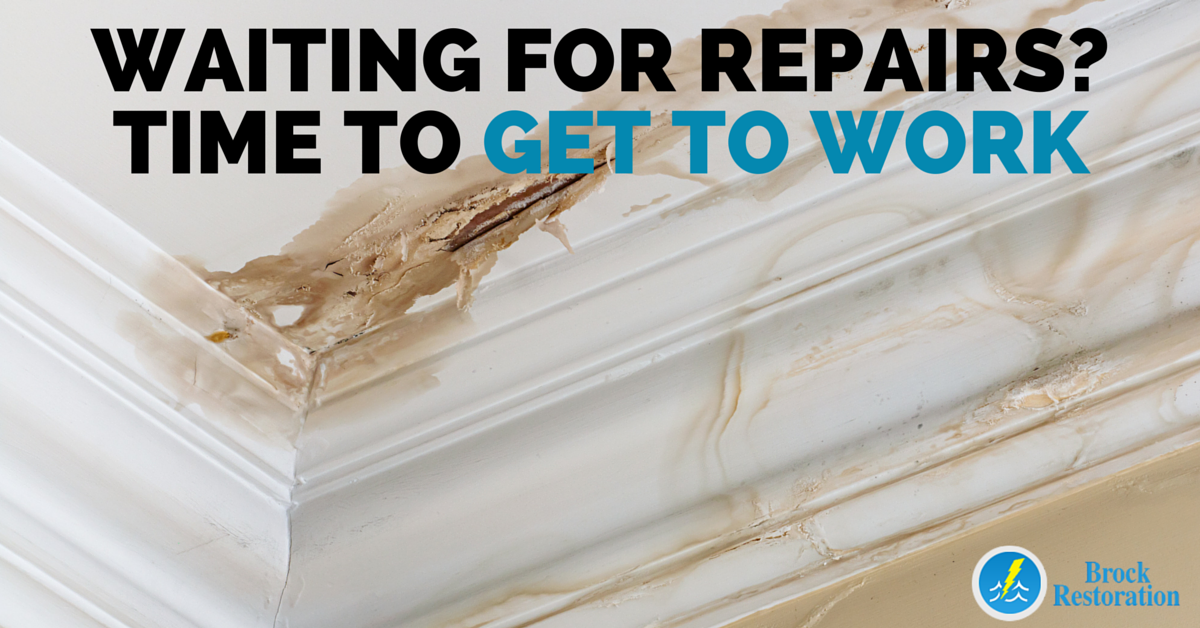Waiting for home repair after a storm or flood? Time to get to work!

Waiting for the repairman after a storm or flood can be just that — waiting. But choosing to do nothing while waiting could lead to more water getting into the house and mold spreading, causing more damage. Taking a proactive approach to storm or flood damage will slow down or limit the damage done to your basement, roof, and walls, and give you a head start on the repair process. Here’s what you can do in that 30-60 minute window while waiting for repairs.
Roof Damage
So there’s been a huge storm, and now you have to deal with the damage done to your roof. Trees and other debris have damaged your roof and walls causing leaks. Time to saddle up and stop the water from getting into the house. You should:
- Locate the source of the leak. This can be tricky. Start with the attic — find the spot where water is entering the house. While that isn’t the direct spot your roof is leaking, you can be sure it’s somewhere directly above it.
- Once you’ve located the leak on your roof, cover it with a tarp from slightly below the leak.
- If the leak is small… Insert the hole with high-grade roofing tar.
- If the leak is larger… Consider using roofing flashing — it’s inexpensive and will stop the leaking for several days and up to a week.
Basement Flooding
Standing water and flood water brings the potential for mold, mildew and rust, and can cause rotting in floorboards and walls. You will need to contact a water damage restoration service immediately for mold remediation and water damage cleanup, but you also can’t stand idle while water devastates your basement. While waiting, you should:
- If the water is coming in because of a burst pipe… Locate your water shut off valve.
- If it’s flood water coming in… Turn off the power. Any water touching home appliances or electronics could potentially cause electrocution. (Your home can be repaired either way — don’t risk your safety.)
- Save valuables! Money, jewelry, heirlooms, and anything else you can’t live without.
- Open windows and doors immediately for airflow to flooded areas.
- If you have a sump pump… fire it up! Place it at the lowest point. If flooding is minimal, try using a wet-dry shop vacuum. Since they tend to only hold 4-5 gallons of water, expect to have to empty it often.
- Let appliances air dry. Don’t use outlets until they have had sufficient time to completely dry out.
- Find the mold! Mold spreads fast, showing signs of growth with 24-48 hours. Dry and disinfect walls and other moist surfaces. Use fans on areas where mold hasn’t started growing.
- Remove wet material, like insulation, carpeting affected by mold, and anything else porous. Remember to wear a face mask and gloves whenever handling mold.
Storm damage is never fun. Water coming in through the roof or your foundation into the basement damages your home and causes you stress. Take the necessary steps to ensure damage is limited until a professional restoration service can arrive onsite. Brock Restoration’s talented and certified technicians are your #1 source for water and storm damage restoration. Give us a call any time, day or night, for emergency services in the Cincinnati area by calling 513-214-3879.
